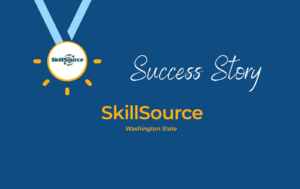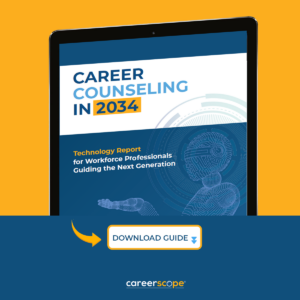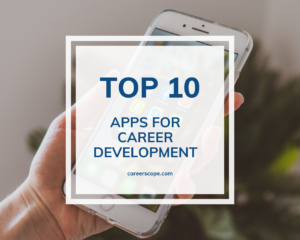It is important to understand the evolution of resumes and how they reflect broader shifts in the job market and technological landscape. The most effective resumes today combine clear, concise content with innovative formats and a personalized touch, offering a holistic view of the candidate’s capabilities and potential value to employers. Here are ways they have gotten better:
1. Digital Evolution & Interactivity
Resumes have transcended traditional paper formats to embrace the digital age. Today, many job seekers are crafting digital or online portfolios that incorporate clickable links, videos, and other interactive elements. Platforms like LinkedIn have further facilitated this transition, offering dynamic ways to present one’s career trajectory and achievements.
2. Visual & Personalized Representation
The modern resume prioritizes personalized and visual content. Infographic-style resumes have gained popularity, offering a unique and visually engaging way to showcase qualifications. In addition, tailoring content to each specific job application has become the norm, especially with the rise of Applicant Tracking Systems (ATS) that screen for particular keywords and criteria.
3. Metrics & Skills Highlight
Today’s resumes emphasize results and metrics over mere job descriptions. Quantifying accomplishments, such as “boosted sales by 20%”, provides tangible evidence of one’s contributions. Additionally, there’s a pronounced focus on showcasing both hard and soft transferable skills, reflecting the diverse requirements of contemporary job roles.
4. Diverse Formats & Personal Branding
Resumes now come in a variety of formats depending on the industry and role, ranging from slideshows to personal websites. Alongside this, the integration of social media profiles and personal branding elements, like blogs, has become common, offering employers a 360-degree view of a candidate’s professional persona and capabilities.
5. Emphasis on Adaptability & Digital Proficiency
The modern resume recognizes the changing dynamics of the workplace. There’s a spotlight on continuous learning, adaptability, and a growth mindset. Furthermore, with the surge in remote working, especially in the post-pandemic era, highlighting digital collaboration skills and remote work experience has become indispensable for many roles.
What makes a resume stand out?
In today’s competitive job market, having a resume that stands out can be the difference between landing an interview and being overlooked. Here are five elements that can make a resume distinctive:
Tailored Content:
- Customize your resume for each specific job application. By aligning your qualifications and experiences with the requirements and responsibilities of the job description, you demonstrate attention to detail and genuine interest. Using keywords from the job description can also help your resume pass through Applicant Tracking Systems (ATS).
Quantifiable Achievements:
- Instead of simply listing duties, focus on accomplishments that can be quantified. Phrases like “increased sales by 25%” or “led a team of 10 to complete a project ahead of schedule” provide concrete evidence of your contributions and efficacy.
Clean and Modern Design:
- An aesthetically pleasing, well-organized layout can capture a recruiter’s attention. Consistent formatting, appropriate use of whitespace, and a hierarchy of information ensure readability. Infographic-style resumes, when used appropriately for the industry, can also be engaging. However, always ensure that design enhances content rather than overshadowing it.
Relevant, Updated Skills and Certifications:
- Highlighting up-to-date skills and recent certifications shows that you are proactive about professional growth and are equipped with current industry knowledge. This is especially important in sectors that rapidly evolve, like tech and digital marketing.
Personal Branding and Online Presence:
- Including links to a professional online portfolio, LinkedIn profile, or other relevant platforms can provide a more comprehensive view of your qualifications and demonstrate your digital savviness. Ensure that any linked content is polished, professional, and reinforces the image you wish to convey.
While these elements can make a resume stand out, it’s equally essential to ensure that the document remains free from errors, is truthful, and conveys a genuine representation of your professional journey.
What are the top types of resumes?
Resumes can be formatted in various ways, depending on the individual’s work history, career objectives, and the industry in which they’re applying. Here are the top five resume types:
Chronological Resume
- This is the most traditional format and is favored by many employers because it easily shows a candidate’s career progression.
- Lists work history in reverse chronological order, starting with the most recent position and moving backward.
- Particularly suitable for those with a strong work history in a particular field and fewer employment gaps.
Functional Resume
- Focuses on skills and qualifications rather than work history.
- Useful for those who have gaps in their employment, are changing careers, or are new to the workforce and want to highlight specific skills or qualifications over experience.
- The work history is typically listed briefly at the bottom of the resume.
Combination/Hybrid Resume
- Merges elements of both chronological and functional formats.
- Typically starts with a qualification summary or a professional profile, highlighting the candidate’s skills, achievements, and qualifications. This is followed by a reverse chronological work history.
- Suitable for those wanting to highlight specific skills while also showcasing a continuous work history.
Targeted Resume
- Customized specifically for a particular job position or company.
- Highlights experience and skills that are directly relevant to the specific job applied for.
- While it requires more effort, it can be highly effective when applying for roles where the applicant wants to make a strong impression.
Curriculum Vitae (CV)
- Typically longer than a standard resume and is often used for academic, scientific, or research positions.
- Provides a comprehensive history of the candidate’s academic credentials, publications, courses taught, professional affiliations, and more.
- Common in many countries outside the U.S. for various job applications, but in the U.S., it’s typically reserved for academic and certain other specialized roles.
Choosing the right type of resume is crucial and should be based on one’s career trajectory, the nature of the job being applied for, and the preferences or expectations of the target industry or company.
Here are key elements to ensure are included on your resume.
The resume serves as a reflection of an individual’s professional journey, and when tailored correctly, it can significantly enhance one’s chances of securing an interview and, ultimately, a job offer. Here are the most important elements of a resume to increase the likelihood of getting hired:
1. Contact Information
- Full name, phone number, professional email address, and optionally, LinkedIn profile or personal website.
2. Objective/Summary (optional but can be useful)
- A brief, 2-3 sentence statement that describes your professional goals and what you aim to bring to the prospective role. This should be tailored to each position you apply for.
3. Work Experience
- List your relevant work experience in reverse chronological order, with your most recent job first.
- For each position, include the job title, company name, location, dates of employment, and a concise list of key responsibilities and achievements.
- Quantify achievements when possible, e.g., “Increased sales by 15% in Q1 2022.”
4. Education
- Your degrees, institutions attended, graduation dates, and any honors or special recognitions. Additional courses or certifications relevant to the job can also be included.
5. Skills
- Highlight specific, relevant skills such as technical proficiencies, languages spoken, or other abilities pertinent to the job.
- It can be beneficial to categorize skills, for instance, “Technical Skills,” “Soft Skills,” and “Languages.”
6. Achievements/Awards
- Any recognitions, publications, or accolades that set you apart from the competition.
7. Professional Associations & Certifications
- Memberships in industry-related organizations or specific certifications that bolster your qualifications.
8. Volunteer Work (if relevant)
- Including volunteer roles can demonstrate your commitment to community, values, and leadership skills.
9. Tailored Content
- Modify your resume for each position by emphasizing the most relevant experience and skills for the job in question.
10. Formatting and Design
- Ensure consistent formatting (font, headings, bullet points).
- Use a clean layout with clear section dividers, making the document easy to scan.
- Avoid dense blocks of text; instead, use bullet points for easier readability.
11. Keywords
- Many companies use Applicant Tracking Systems (ATS) to screen resumes. Ensure your resume contains keywords from the job description to increase the chance it will be flagged for review by a hiring manager.
12. References
- While you don’t need to list references directly on your resume, it’s good to have them prepared. You can indicate “References available upon request” if there’s space.
Lastly, always proofread your resume multiple times to avoid typos or grammatical errors. If possible, have a trusted person in your industry review it for feedback. Remember, your resume is often your first impression with an employer, so make it count!














